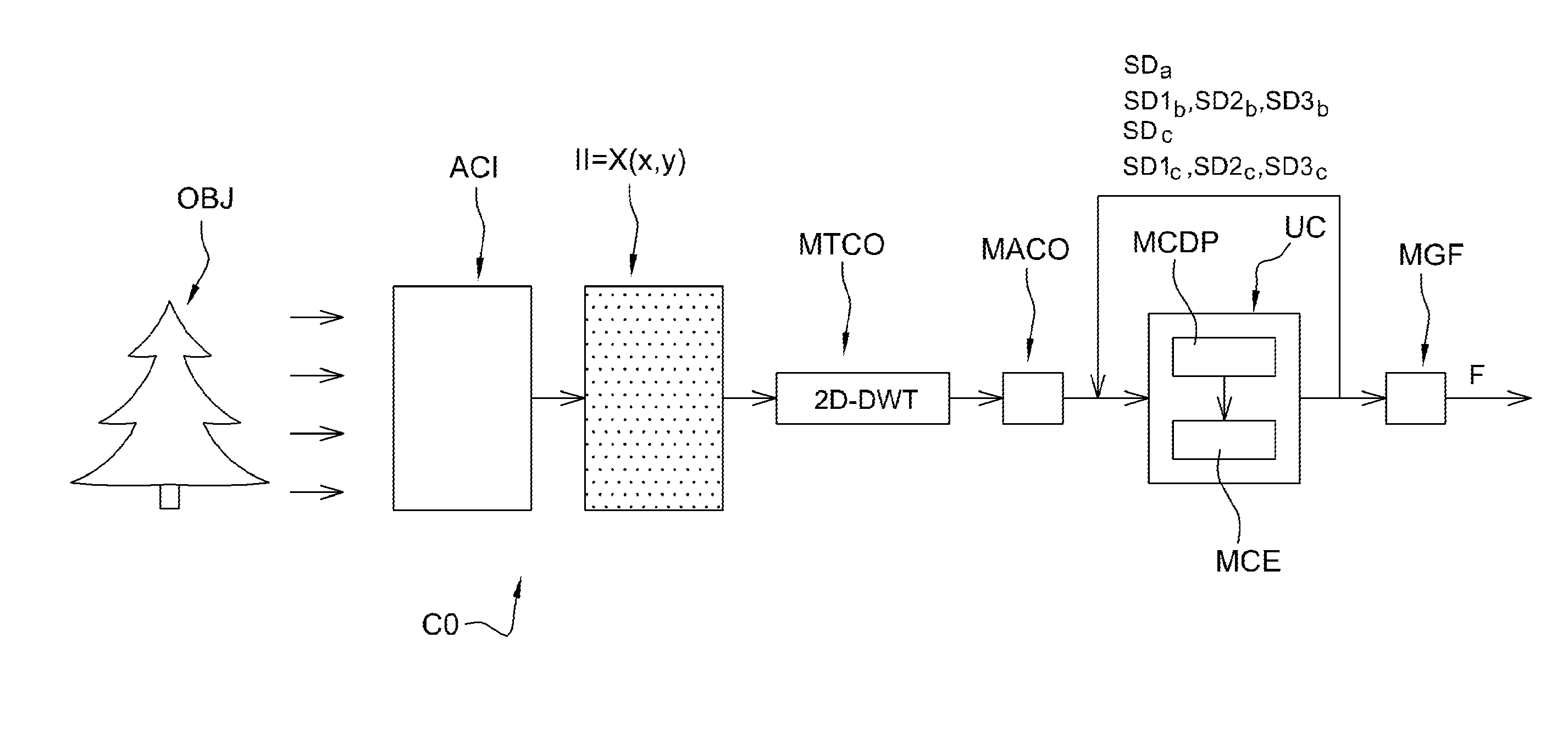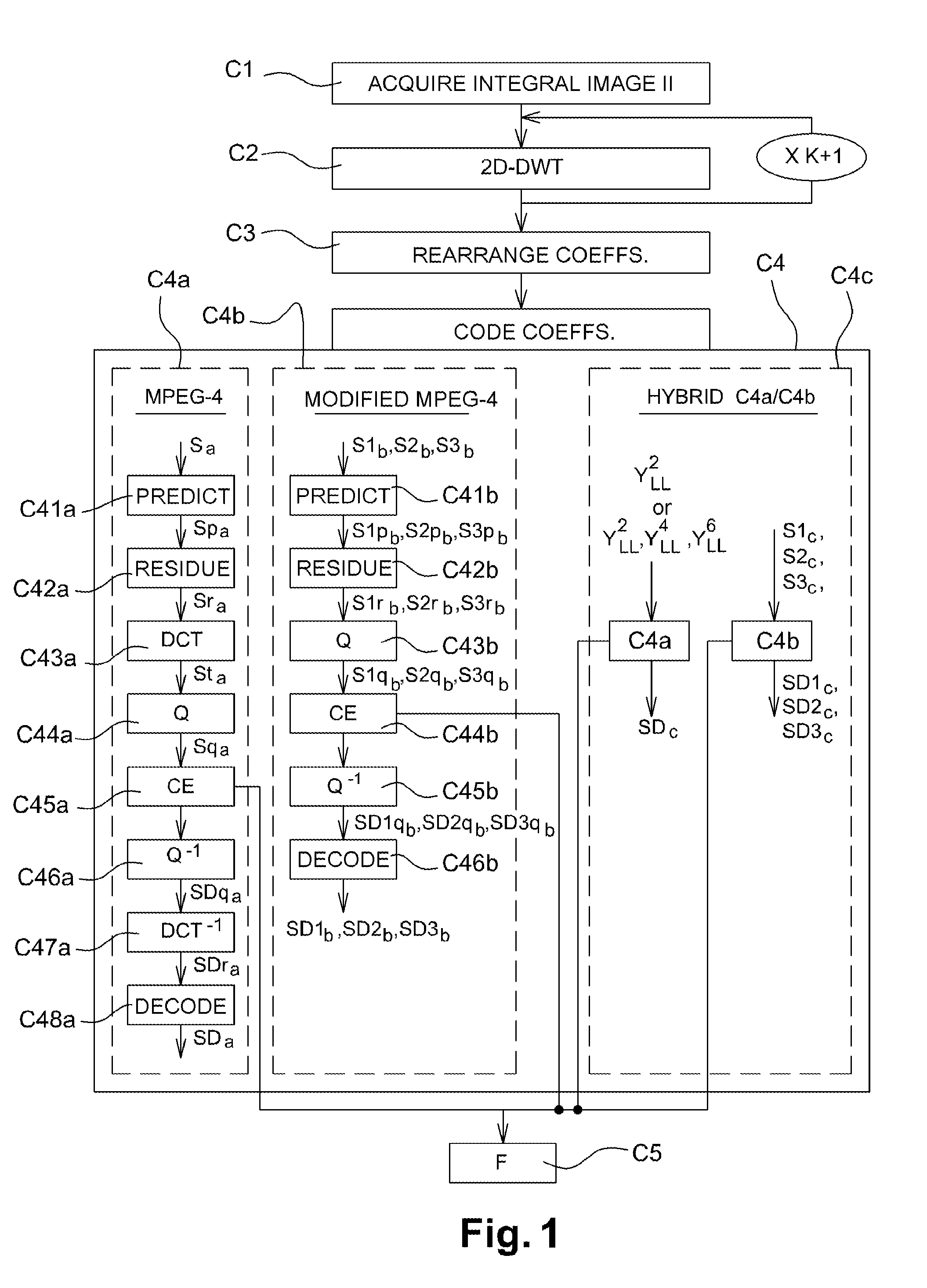Method of coding and decoding integral images, a device for coding and decoding integral images, and corresponding computer programs
a technology of integral images and coding, applied in the field of image processing, can solve the problems of reducing the size of integral images, reducing the efficiency of coding and decoding, so as to eliminate the multiple spatial redundancies, eliminate the block effects inherent in applying dct, and eliminate any constraint
- Summary
- Abstract
- Description
- Claims
- Application Information
AI Technical Summary
Benefits of technology
Problems solved by technology
Method used
Image
Examples
Embodiment Construction
[0066]An Implementation of the Coding Portion
[0067]An implementation of the invention is described below in which the coding method of the invention is used for coding a sequence of integral images.
[0068]The coding method of the invention is shown in the form of an algorithm comprising steps C1 to C5 shown in FIG. 1.
[0069]In the implementation of the invention, the coding method of the invention is performed in a coder device CO shown in FIG. 2.
[0070]The first step C1, shown in FIG. 1, is acquiring an integral image II of the sequence of images for coding by using an image acquisition module ACI as shown in FIG. 2.
[0071]An example of acquiring an integral image is shown in FIGS. 3A and 3B.
[0072]In the example shown, the integral image II is representative of an object OBJ that is in perspective in a three-dimensional scene SC. The integral image II is acquired in the direction of arrow F1 by a two-dimensional scanner 2D of the charge-coupled device (CCD) type, which is given referen...
PUM
 Login to View More
Login to View More Abstract
Description
Claims
Application Information
 Login to View More
Login to View More - R&D
- Intellectual Property
- Life Sciences
- Materials
- Tech Scout
- Unparalleled Data Quality
- Higher Quality Content
- 60% Fewer Hallucinations
Browse by: Latest US Patents, China's latest patents, Technical Efficacy Thesaurus, Application Domain, Technology Topic, Popular Technical Reports.
© 2025 PatSnap. All rights reserved.Legal|Privacy policy|Modern Slavery Act Transparency Statement|Sitemap|About US| Contact US: help@patsnap.com



